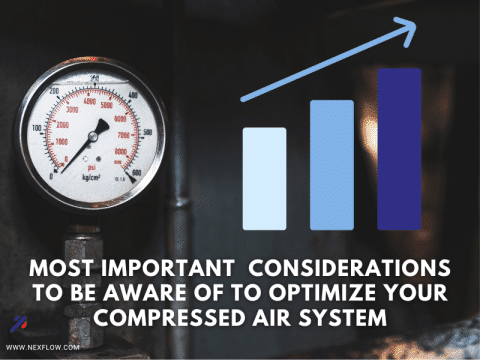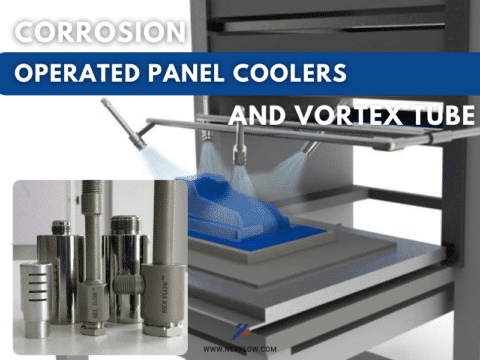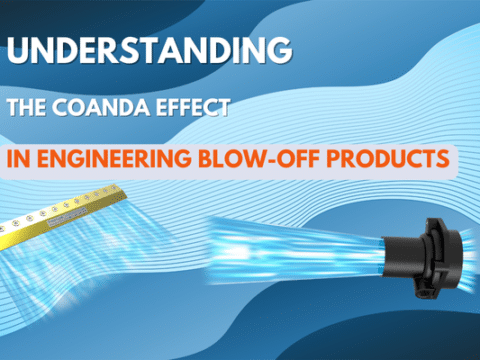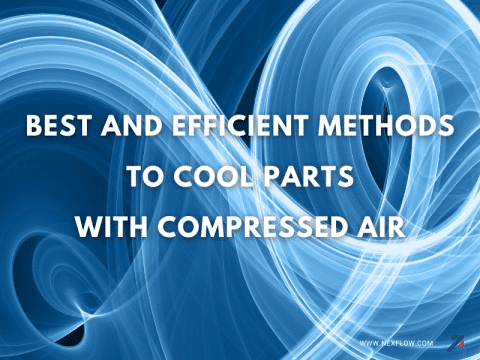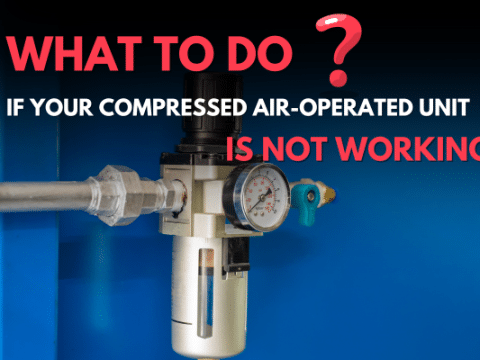
Compressed air-operated air knives are popular for blow-off, cleaning, drying, and even cooling applications. They replace pipes with holes and rows of air nozzles.
When properly sized and installed, they can reduce overall air consumption, reduce noise, and give a continuous and uninterrupted blow-off and cleaning curtain long its length.
As simple as an air knife looks, it is actually a precision-made instrument, and certain characteristics identify a well-produced air knife versus a mediocre design.
Performance comes first, defined by the efficiency and quality of the air output.
You can define efficiency as the airflow’s force (or velocity) divided by the air consumed (SCFM or SLPM). Most air knives tend to be relatively the same in terms of force/consumption, but the more efficient designs will give the highest force at a lower input pressure.
For example, compared to two other significant manufacturers, the Nex Flow® X-Stream® Air Blade Air Knife produces the same force at the same air consumption with the inlet at 60 PSIG compared to the others at 80 PSIG.
At such a significantly lower pressure requirement, one can potentially realize additional energy savings because producing 60 PSIG takes much less energy than producing 80 PSIG.
Another thing to listen for is the noise level between different makes of air knives. Low exhaust noise is a qualitative indicator of efficiency. The lower the noise, the greater the energy use efficiency.
The quality of performance depends on how evenly the flow remains over its length through a wide range of pressure inputs.An even flow across its size is generally the preferred result for applications instead of a design that may spike in the middle. A poorly designed air knife indicates a lack of understanding of the aerodynamics needed for the technology.
Then, there are obvious factors to consider, such as the construction of the air knife and its parts.
Most air knife designs use a shim to maintain the air gap (where the compressed air exits). People prefer metal shims over plastic shims because they last longer.Even metal shims can wear out over time especially if the air supply is not clean and dry. Plastic shims wear out much more quickly, requiring more maintenance for replacement, and they are, of course, cheaper to produce.
You can also machine the gap, and it is important to machine the gap evenly.
The material used in the body of the air knife may be aluminum, stainless, and, in some cases, plastic.
Aluminum air knives “should” be anodized. If you use aluminum air knives that are not anodized in a factory environment, the condition of the aluminum will deteriorate rapidly. You should not pay a premium for non-anodized aluminum products.
An excuse sometimes provided by suppliers who do not anodize is that it negatively affects the airflow. That is only true if the quality of manufacturing cannot be maintained. It is not an issue if produced well, just a valid cost.
When an air knife is assembled, the screws should be evenly torqued across the length and assembled according to instructions. An air knife should also have adequate mounting options to avoid the need to take them apart to mount. Nex Flow units have mounting holes on all their air knife designs.
Finally, good instructions and service are important. Nex Flow maintains a well-supported global supply chain.
Air Knives are a great product but vary widely in design and quality so choose your brand carefully.
Good Compressed Air Operated Air Knife, important things to know.




